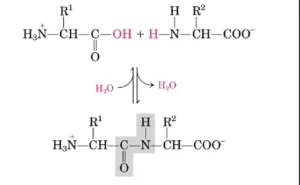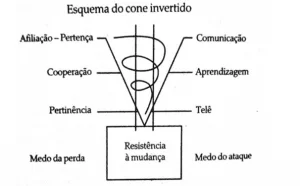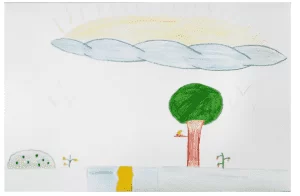REVIEW ARTICLE
LUZ, Maxuel Pereira [1]
LUZ, Maxuel Pereira. Child sexual abuse during the Covid-19 pandemic. Revista Científica Multidisciplinar Núcleo do Conhecimento. Year. 07, Ed. 11, Vol. 12, pp. 45-52. November 2022. ISSN: 2448-0959, Access link: https://www.nucleodoconhecimento.com.br/psychology/sexual-abuse
ABSTRACT
It is known that child sexual abuse is a public health problem in Brazil, and in the pandemic, this problem was exacerbated due to social isolation. Due to the closure of schools, children had to spend more time indoors, becoming vulnerable to sexual violence. Therefore, this article has as its guiding question: how did the pandemic impact cases of child sexual abuse? Therefore, the objective is to analyze child sexual abuse during the pandemic period, also presenting some factors that contributed to this practice, as well as methods that help in identifying and coping with abuse. The methodology used in this study was the literary review. The results show that, among the ways to face child sexual abuse, the institutions draw attention to the government’s obligations to subsidize the reception, when prudent, and information necessary to identify cases correctly. It is concluded that, in cases of disclosure of abuse, it is important that the victim feels welcomed and safe to talk about the violence experienced, as well as receive credit and support, as this is a very difficult moment. It is also necessary that there are trained professionals to identify cases of sexual abuse against children and to work with both preventive and therapeutic interventions to overcome this violence on the part of the victim.
Keywords: Sexual abuse, Covid-19, Social impact, Pandemic.
1. INTRODUCTION
According to data from the Brazilian Yearbook of Public Security (FÓRUM BRASILEIRO DE SEGURANÇA PÚBLICA, 2019), every hour, four girls up to 13 years old are raped in the country. 63.8% of allegations of rape in Brazil are crimes committed against vulnerable people, and more than 5,636 cases registered as rape are, in fact, rape of vulnerable people, since they comprise the age group from 0 to 13 years old (FÓRUM BRASILEIRO DE SEGURANÇA PÚBLICA, 2019).
It is known that most of these cases occur in a way that the victim is silenced and in an intra-family environment, since the aggressor is usually a relative, friend or close to the family.
From this perspective, as crime largely occurs indoors, this group, during the pandemic, was held hostage in environments that are often favorable to suffering some type of sexual violence.
As many cases were discovered at school, by teachers, or were observed by close people and friends, due to their behavior in social environments, such as squares, shopping malls and churches, staying at home made it difficult to combat this violation of the rights of the child and the adolescent, because, without complaints, it becomes difficult for the responsible bodies to adopt protective and effective measures, aiming to reduce the recurrence of this crime.
This fact can even be observed in data released by the Ministry of Women, Family and Human Rights, which reveal the decrease in the number of registered cases of sexual violence against children and adolescents during the period of the coronavirus pandemic (BRASIL, 2021).
In view of the above, this article aims to investigate: how did the pandemic impact cases of child sexual abuse? In view of this, the objective is to analyze child sexual abuse during the pandemic period, also presenting some factors that contributed to this practice, as well as methods that help in identifying and coping with abuse.
2. THE COVID-19 PANDEMIC AND ITS IMPACTS
According to Mesquita and Mesquita (2020), on the last day of 2019, the World Health Organization (WHO) was alerted to several reports of pneumonia in the city of Wuhan, Hubei province, China. It referred to a current category of coronavirus that had not previously been identified in humans.
According to Levandowski et al. (2021), Covid-19 is a contagious pathology originated by the new coronavirus and its main indication: fever, tiredness and dry cough. The disease can present several other symptoms, such as: headache, sore throat, diarrhea, loss of taste or smell. Generally, these indications are not worrisome and evolve as the disease progresses. There are also some people who get infected but only have milder symptoms.
Santos (2021), states that most people, a percentage of 80%, recover from symptoms without undergoing hospitalization. However, a minority sickened by Covid-19 is seriously compromised, as this disease affects the respiratory system. Among this minority is the population over 60 years old and those who have chronic diseases, such as: arterial hypertension and other pathologies of the cardiac system, diabetes mellitus or cancer, as they have great potential to develop the most severe form of the disease.
Covid-19 is transmitted through the air, mainly in contact between people, when the infected individual sneezes, speaks or coughs. Another means of propagation is through a contaminated surface (MESQUITA and MESQUITA, 2020).
According to data obtained from the official website of the Ministry of Health (BRASIL, 2021), the disease had an impact on the world, spreading rapidly, causing many deaths and overloading health systems.
The pandemic has killed 3,739,777 people worldwide since the end of December 2019 and, after almost a year and a half of the pandemic, more than 173,537,280 cases of infections have been diagnosed by the world of Health (BRASIL, 2021).
In this scenario, in order to contain the growing spread of the virus, Marques et al. (2020) reports that, in recent months, several predictions have been made, there has been a change in routine, work and schools have been closed, in addition to social distancing measures, lockdown and the use of masks.
3. COVID-19 AND CHILD SEXUAL ABUSE
According to the Civil Code (BRASIL, 1940, art. 213), child sexual abuse can be defined as:
Art. 213. Constranger alguém, mediante violência ou grave ameaça, a ter conjunção carnal ou a praticar ou permitir que com ele se pratique outro ato libidinoso:
Pena – reclusão, de 6 (seis) a 10 (dez) anos.
Art. 218. Induzir alguém menor de 14 (catorze) anos a satisfazer a lascívia de outrem:
Pena – reclusão, de 2 (dois) a 5 (cinco) anos.
Art. 215. Ter conjunção carnal ou praticar outro ato libidinoso com alguém, mediante fraude ou outro meio que impeça ou dificulte a livre manifestação de vontade da vítima:
Pena – reclusão, de 2 (dois) a 6 (seis) anos.
In Brazil, this problem is so recurrent that, in 2019 alone, there were 66,123 records of sexual violence, among which 57.9% were aged no more than 13 years. Furthermore, in 84.1% of reported cases, the author was known to the victim (CUSTÓDIO and CABRAL, 2021).
Accordingly, data portrayed by Silva and Martins (2021), during the pandemic period, demonstrate that “the numbers for the second half of 2020 on the Dial 100, 67.30% of suspects are family members […], the category stepfather/ stepmother (1,145) represents the majority of suspects of child sexual violence, followed by fathers (1,121) and mothers (767)”.
Santos (2021), states that these abuses are preferably committed against girls, and more than half were against black children and adolescents.
According to Moreira and Magalhães (2020), intrafamily sexual violence against children and adolescents is characterized by being a silent form of violation of rights, since it occurs in the environment of family relationships, which makes it difficult to identify and, consequently, notification to the competent authorities.
3.1 FACTORS THAT CONTRIBUTED TO THE PRACTICE OF CHILD SEXUAL ABUSE DURING THE PANDEMIC
Prieto (2020) reveals that, given the suspension of classes and the temporary closure of leisure areas, churches, temples, children and adolescents have become more defenseless against sexual abuse during the pandemic, since their interactions have been restricted to the intrafamily environment. As a result, they ended up losing interaction with support people, to whom they could reveal the abuse suffered, and, as a consequence, the number of complaints ended up decreasing due to underreporting (SOUSA; NEIVA and FARIAS, 2021).
Accordingly, Santos; Santana and Souza (2020) reported that due to the public health crisis scenario, the fact that schools were closed and, also, the sociability environments of children and adolescents prohibited the movement of people, the little ones ended up having to stay more at home, and, as a result, this group ended up being more susceptible to being victims of sexual abuse, since most cases of pedophilia happen within the family.
Bessa (2021) and Marques et al. (2020), also report that, despite the decrease in complaints, isolation contributed to the increase in cases of child sexual abuse, mainly due to the fact that schools, community centers and other places cannot protect victims in situations of violence, especially children who cannot escape.
Another factor that contributed to abuse practices during the pandemic period, according to Marques et al. (2020), was the absence of those responsible for the child. Furthermore, mothers who have already been abused are easily omitted when they learn that their children may go through this, due to a serious psychic disturbance (a side effect of abuse).
Moreira and Magalhães (2020, p. 272), point out that
Em tempos de pandemia a situação de violação tende a ser agravada em razão da mudança comportamental das pessoas que compartilham o mesmo domicílio com crianças e adolescentes, as quais se tornam os principais alvos dessas transformações de conduta e, consequentemente, acabam ficando cada vez mais expostas a situações de violência no ambiente familiar.
3.2 PRACTICES THAT CONTRIBUTE TO IDENTIFYING AND ADDRESSING ABUSE
Regarding the identification of abuse, Marques et al. (2020), report that it is possible for the child to have a serious fear of retaliation or the threat received from his aggressor, which makes it even more difficult to solve this problem, which generates serious emotional consequences. Therefore, it is essential that family members are aware of the attitudes of children.
In addition, it can be observed: “fear of the abuser, fear of causing confusion, fear of not believing his report, fear of the effects on the family and what could happen to the abuser are the most frequent reasons for children not to reveal the abuse” (PLATT, GUEDERT; COELHO, 2020, p. 9).
This is due to the fact that talking about sexual abuse is talking about a traumatic event rooted in the victim’s life, causing serious consequences for their personal development. Therefore, it is essential that the victim feels welcomed and safe to talk about the violence experienced, as well as receive credit and support (MESQUITA and MESQUITA, 2020).
For this reason, bearing in mind that this scenario involves doubts, uncertainties, fears and problems not only with the victim, but also with family members, monitoring and psychological intervention are necessary and essential, both for the victim and for their relatives, so that they can offer adequate emotional support, especially when it comes to children (SOUSA; NEIVA and FARIAS, 2021).
Thus, Prieto (2020) and Mesquita and Mesquita (2020) show that, among the ways to face child sexual abuse, institutions draw attention to the government’s obligations to subsidize the reception, when prudent, and information necessary to identify cases correctly, improving the education of the population, increasing the means of denouncing and strengthening assistance and shelter services for girls and boys, whether children or adolescents, subjected to any type of sexual abuse.
In addition, the stigma that portraying sex education for children is unnecessary or ineffective must be broken, as guiding them in this phase of sexual discovery is capable of providing means for understanding abuse practices, thus avoiding future emotional and behavioral disorders (SANTOS, 2021).
4. FINAL CONSIDERATIONS
This article aimed to analyze child sexual abuse during the pandemic period, also presenting some factors that contributed to this practice, as well as methods that help in identifying and coping with abuse, being guided by the question: how Has the pandemic impacted cases of child sexual abuse?
In view of the above, it was found that child sexual abuse occurs mainly within the family environment, which is a complex and multi-causal problem that causes numerous damages to the victim’s development.
It was also found that there is a difficulty in preventing and identifying this violation due to the Covid-19 pandemic, since, due to social isolation measures, children have lost their support networks, to which they could reveal the suffered abuse.
Thus, it is concluded that, in cases of disclosure of abuse, it is important that the victim feels welcomed and safe to talk about the violence experienced, as well as receive credit and support, as this is a very difficult moment. It is also necessary that there are trained professionals to identify cases of sexual abuse against children and work, both with preventive and therapeutic interventions, to overcome the violence suffered.
REFERENCES
BESSA, R. F. D. Abuso infantil intrafamiliar: aumento de casos durante a pandemia. Conteúdo Jurídico, 2021. Disponível em: https://conteudojuridico.com.br/consulta/Artigos/56542/abuso-infantil-intrafamiliar-aumento-de-casos-durante-a-pandemia Acesso em: 11 nov. 2022.
BRASIL. Decreto-Lei n.o 2.848, de 7 de dezembro de 1940. Código Penal. 1940. Disponível em: https://www.planalto.gov.br/ccivil_03/decreto-lei/del2848compilado.htm. Acesso em: 11 dez. 2022.
BRASIL. Ministério da Mulher, da Família e dos Direitos Humanos. Ouvidoria Nacional de Direitos Humanos em números: dados de 2021. gov.br, 2021. Disponível em: https://www.gov.br/mdh/pt-br/ondh. Acesso em: 11 nov. 2022.
CUSTÓDIO, A. V.; CABRAL, J. O impacto das medidas de isolamento social em tempos de pandemias: uma análise dos indicadores de abuso sexual contra crianças e adolescentes. Revista Jurídica (FURB), v. 25, n. 57, fev. 2022. ISSN 1982-4858. Disponível em: https://bu.furb.br/ojs/index.php/juridica/article/view/9945. Acesso em: 14 de julho de 2022.
FÓRUM BRASILEIRO DE SEGURANÇA PÚBLICA. Anuário Brasileiro de Segurança Pública. Fórum Brasileiro de Segurança Pública, ano 13, 2019. ISSN 1983-7364.
LEVANDOWSKI, M. L. et al. Impacto do distanciamento social nas notificações de violência contra crianças e adolescentes no Rio Grande do Sul, Brasil. Cadernos de Saúde Pública, v. 37, n. 1, p. e00140020, 2021. Disponível em: https://doi.org/10.1590/0102-311X00140020. Acesso em: 11 nov. 2022.
MARQUES, E. S. et al. A violência contra mulheres, crianças e adolescentes em tempos de pandemia pela COVID-19: panorama, motivações e formas de enfrentamento. Cadernos de Saúde Pública, v. 36, n. 4, p. e00074420, 2020. Disponível em: https://doi.org/10.1590/0102-311X00074420. Acesso em: 5 nov. 2021.
MESQUITA, A. de A. B. S.; MESQUITA, E. A. A responsabilidade social do empregador durante a pandemia da Covid-19. Ponto de Vista Jurídico, v. 9, n. 2, p. 60, 2020. Disponível em: https://periodicos.uniarp.edu.br/index.php/juridico/article/view/2398/1240. Acesso em: 30 out. 2021.
MOREIRA, R. B. da R.; MAGALHÃES, D. K. de O. Os impactos da pandemia de covid-19 no enfrentamento da violência sexual intrafamiliar contra crianças e adolescentes. Revista da Jornada de Pós-graduação e Pesquisa, vol. 16, n. 16, 2020. Disponível em: http://revista.urcamp.tche.br/index.php/rcjpgp/article/view/3419. Acesso em: 25 out. 2021
PLATT, V. B.; GUEDERT, J. M.; COELHO, E. B. S. Violência contra crianças e adolescentes: notificações e alerta em tempos de pandemia. Revista Paulista de Pediatria, v. 39, 2020. Disponível em: https://doi.org/10.1590/1984-0462/2021/39/2020267. Acesso em: 11 nov. 2022.
PRIETO, I. Pandemia dificulta denúncia de violência sexual contra crianças e adolescentes no Estado de São Paulo, revela relatório. Unicef Brasil, 2020. Disponível em: https://www.unicef.org/brazil/comunicados-de-imprensa/pandemia-dificulta-denuncia-de-violencia-sexual-contra-criancas-e-adolescentes-em-sp. Acesso em: 11 nov. 2022.
SANTOS, D. Pandemia aumenta risco de exploração e abuso sexual de crianças e adolescentes. Criança livre de trabalho infantil, 2021. Disponível em: https://livredetrabalhoinfantil.org.br/noticias/reportagens/pandemia-aumenta-risco-de-exploracao-e-abuso-sexual-de-criancas-e-adolescentes/. Acesso em: 2 nov. 2021.
SANTOS, L. K. da P.; SANTANA, C. de C.; SOUZA, M. V. O. Ações para o fortalecimento da resiliência em adolescentes. Ciência & Saúde Coletiva. v. 25, n. 10, p. 3933-3943, 2020. Disponível em: https://doi.org/10.1590/1413-812320202510.22312018. Acesso em: 11 nov. 2022.
SILVA, V. R. da; MARTINS, F. B. Denúncias de violência sexual infantil no Disque 100 caem em 2020, mas pandemia pode impactar na subnotificação dos casos. Gênero e Número, 2021. Disponível em: https://www.generonumero.media/violencia-sexual-infantil/. Acesso em: 15 de julho de 2022.
SOUSA, P. A.; NEIVA, L. D. C.; FARIAS, R. R. S. Principais impactos psicológicos em crianças vítimas de abuso sexual. Research, Society and Development, v. 10, n. 8, p. e18310817270, 2021. Disponível em: https://rsdjournal.org/index.php/rsd/article/view/17270 Acesso em: 11 nov. 2022.
[1] Postgraduate in Higher Education and EJA, Bachelor in Theology, Technologist and Public Management and Coaching and Human Development Graduating in Psychology. ORCID:000-002-3297-8615.
Sent: August, 2022.
Approved: November, 2022.




